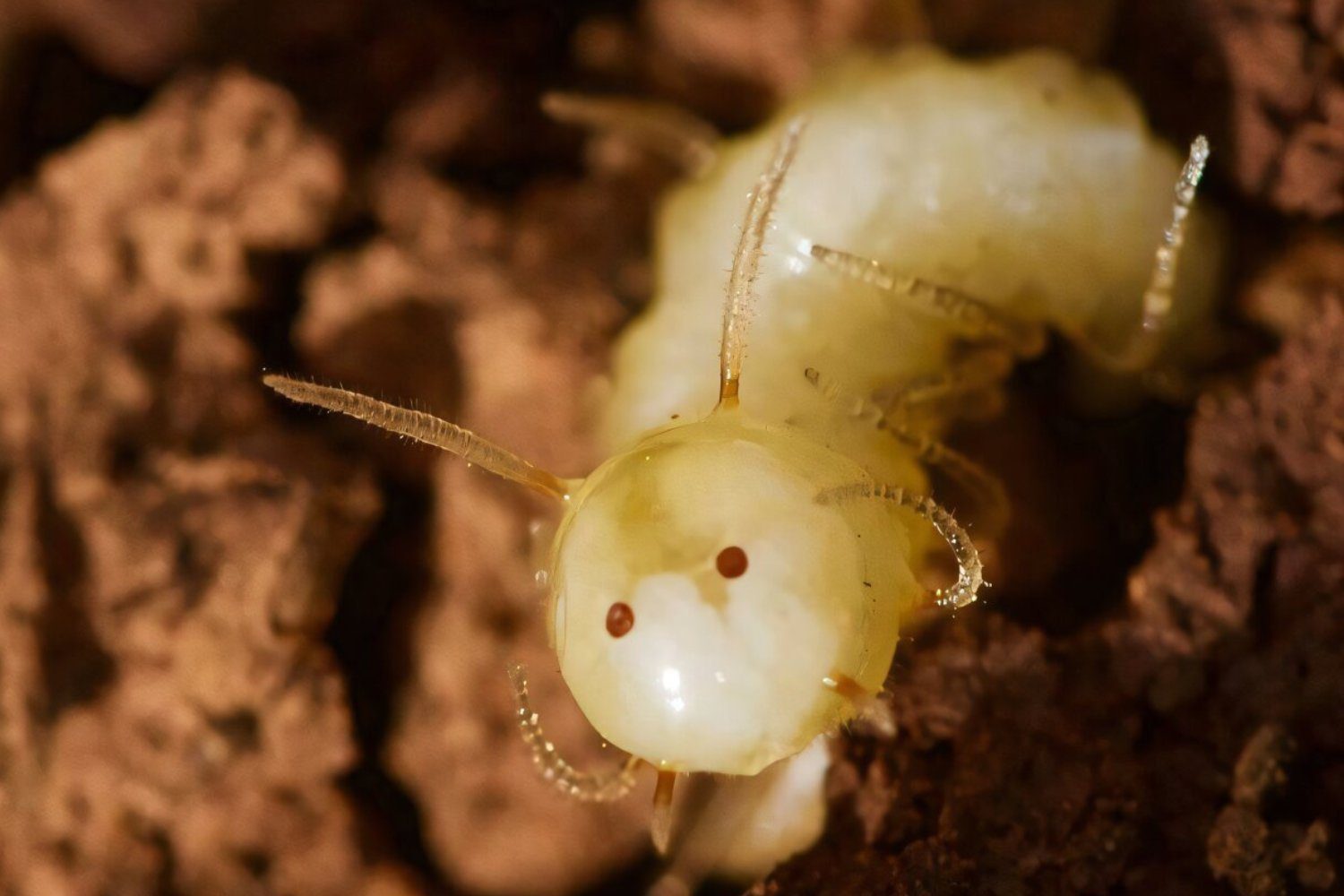
How does a fly larva manage to infiltrate a termite colony? With a posterior that resembles a termite’s head, of course!
An international research team in Morocco has uncovered blow fly larvae not only inhabiting but also flourishing within a termite nest. This potentially undiscovered species has developed exceptional adaptations to escape detection by the colony’s soldier termites, known for swiftly dismantling intruders. Some of its clever survival tactics include a termite-head-shaped rear, tentacle-like appendages, and the ability to mimic the distinct scent of the colony. The success of this strategy is evident, as researchers observed the termites nurturing these unexpected guests.
“This is quite a serendipitous discovery. Our research group primarily focuses on butterflies and ants. Due to heavy rainfall, we were not able to find butterflies, so we began searching for ants. Upon lifting a rock, we stumbled upon a termite mound containing three unidentified fly larvae,” stated Roger Vila, a biologist at the Institute of Evolutionary Biology, in a statement released by the Spanish National Research Council here. “It seems to be an extremely rare species; during three additional expeditions in the same region, we only found two more flies in a different termite mound after lifting hundreds of stones,” he added.
As highlighted in a study published in the journal Current Biology, the research team identified what they call a “termite mask” on the rear end of the blow fly larvae. This head-shaped feature includes non-functional antennae and palps (sensory appendages near the mouth) perfectly sized to match those of large harvester termites. What’s even more intriguing is that the larvae’s breathing openings resemble the eyes on their termite mask.
“Most termites reside several meters underground and lack visual perception. However, harvester termites venture out at dusk to gather grass and possess functional eyes, which the larvae imitate with their spiracles [breathing holes],” explained Vila.
Since termites haven’t invented artificial lighting yet (and considering how easily they’re tricked, they likely won’t for a long time), members of the same colony recognize each other through the use of their antennae for smelling and touching. The larvae seem to comprehend this, as Vila and his colleagues identified numerous antenna-like tentacles along their bodies, which presumably assist the larvae in communicating with multiple termites simultaneously. Additionally, they have developed a method to replicate the specific scent of the termites.
“We analyzed the chemical makeup of these larvae and were surprised to find they are indistinguishable from the termites in their colony; they emit the exact same smell,” Vila revealed. “Moreover, the chemical profiles of the larvae and the termites within a given colony show slight variations that distinguish them from other termite mounds. This scent plays a crucial role in their interactions, allowing the fly larvae to thrive within the communal life of termites. It serves as a chemical disguise.”
And the benefits are evident. After relocating the larvae and their termite colony to a laboratory setting, researchers noted that the larvae generally positioned themselves in the busier sections of the termite nest. There, their unsuspecting termite hosts groomed them, and may have even fed them, although the researchers indicate this latter behavior requires further confirmation.
Moreover, “the larvae we examined eventually perished without completing metamorphosis, suggesting there might be elements of the nest and the mutualistic relationship with the termites that we couldn’t replicate in the lab. Their dietary needs remain unknown, and their adult form continues to be a mystery,” Vila added.
Interestingly, humpback flies also exhibit similar masking behaviors, albeit as adults rather than in their larval stages. Furthermore, “the common ancestor of blow flies and humpback flies existed over 150 million years ago, much longer than the time separating humans from mice. Thus, we believe we have documented a new instance of social integration evolution,” Vila remarked.
The research team further identified this new fly as belonging to the genus Rhyncomya. Since scientists are unaware of any other Rhyncomya species exhibiting such a unique lifestyle, it is speculated that this species must have experienced rapid evolution.
Ultimately, the researchers assert they are the first to record a blow fly successfully concealed among termites. Who knows how many pretenders faced dismemberment by soldier termites before perfecting their disguise?









